
I can’t believe that Halloween is already creeping closer! Where has summer gone? Well, actually it is right outside my window: bright sunshine and clear blue sky. But that doesn’t change that fall is fast approaching, with its long, dark evenings. And how better to greet the little monsters on October 31 than with the cozy light of a scenic tealight holder?
- Your favourite cookie dough
- Ruler
- Kitchen knife
- 1 (12 x 12-cm / 4 3/4 x 4 3/4-in) cookie with 8 x 8-cm / 3 x 3-in cutout (for frame)
- 1 (12 x 8-cm / 4 3/4 x 3-in) cookie (for bottom plate)
- 2 (4 x 4-cm / 1 1/2 x 1 1/2-in) cat cookies, facing left and right
- 2 (5 1/2 x 2-cm / 2 x 3/4-in) bat cookies
- File (i.e., Microplane tool)
- Pastry bags with tips of various sizes, including #3 round tip (for flooding), #2 round tip (for "glue" icing), and #1 and #0 round tips (for details and flooding small parts)
- Dark grey royal icing, thick flooding consistency (for outlining, flooding small parts, and details)
- Dark grey royal icing, flooding consistency (for flooding large parts)
- Clear alcohol or extract (for extending luster dusts/coloring) and mixing dish
- Silver luster dust
- Gold luster dust
- Brown gel food coloring
- #2 and #10 hard, flat brushes
- #0 soft, round brush
- Scribe tool and damp cloth
- Ivory royal icing, thick flooding consistency
- White royal icing, medium-stiff consistency (for "glue")
- 1 (11 x 11-cm / 4 1/4 x 4 1/4-inch) wafer paper sheet
- Graveyard template (below) and tape
- #4/0 and #10/0 brushes
- Carton or other container (to support cookie while drying)
- Tealight or other small candle
Roll out the cookie dough to a thickness of 5 millimeters (just under 1/4 inch), and cut out the six cookies indicated in the list above. I cut out the frame and the bottom plate with a ruler and a kitchen knife directly on the baking sheet. When making the cats, remember to turn one of them, so that you will have one facing each direction! Bake the cookies as directed in your recipe, and let them cool completely. The bottom plate and the frame might need a little filing after baking to get smooth, completely straight edges.
A little word about pastry tips at this point: I hardly ever use them. Normally I use plastic pastry bags with self-cut openings. In the photo below, the bag with ivory-colored icing (left) has an opening about the size of a #0 PME tip, and the bag with the grey icing has an opening comparable to a #1 Wilton tip. Of course, you are free to work with tips if they suit you better, so I’ll give estimated sizes throughout the tutorial. But the piping for this project works fine without them.
Fill a pastry bag fitted with a #0 round tip (or equivalent) with dark grey royal icing (RI) of thick flooding consistency, and outline the frame cookie. Try to stay directly on the edge of the cookie, and leave no holes in the line. Let the outline dry a few minutes. Using a pastry bag fitted with a #3 round tip (or equivalent) and dark grey RI of flooding consistency, fill the frame cookie. Make sure not to overfill. Let the cookie dry completely; this can take several hours.
I didn't outline and flood the bottom plate, but you can if you like.
Once the frame cookie is dry, you can paint it. Mix up some silver and gold luster dusts with alcohol to create metallic "paints", both on the thicker side. Also mix some brown "paint" by extending brown gel food coloring with alcohol.
Paint silver on the frame with the #2 hard, flat brush. The brush strokes should all go in one direction and be clearly visible, as shown above. Don’t try to be too even or neat; just blend the strokes a little when needed.
For the bottom plate, first paint it with the extended brown coloring and a #10 hard, flat brush (top plate, below). Then, with a #0 soft, round brush, paint the gold and silver accents using uneven strokes in several layers (bottom plate, below).
You're now ready to decorate the two cats in four easy steps, as pictured below. Grab a pastry bag fitted with a #1 round tip (or equivalent), and fill it with dark grey RI of thick flooding consistency. First, flood the cat body, and let the icing crust. Second, pipe the head. (Allowing some drying time between the body and head will keep those areas separate and distinct.) When necessary, use your scribe tool to shape the icing at the edges and to work the icing into tight areas. Regularly clean the scribe tool with a damp cloth to prevent it from collecting too much icing. Repeat these two steps for the second cat.
Now, fill a pastry bag fitted with a #0 round tip (or equivalent) with the ivory RI of thick flooding consistency. On each cat, pipe a collar, a claw at the paw, and the eyes. Again, use the scribe tool to help shape the icing as required. Once the icing has completely dried (allow about 2 to 3 hours), go ahead to the fourth step, which is painting the cats. Use the same silver and gold paints that you used for the frame and bottom plate, but use the silver on the gray parts and the gold on the ivory details.
To make the bats, first pipe the wings with the same dark grey icing that you used for the cats. Allow the wings to crust, and then pipe the body. When the icing surface has dried, pipe the little teeth with the ivory RI, the same icing that was used for the cat details. Use the scribe tool whenever some shaping is required. The paint job is last – silver on the grey parts, gold on the ivory.
Once everything is thoroughly dry, assemble the frame. Glue the two cats (so they are facing one another) to the bottom of the frame with a few dabs of white royal icing "glue" of medium-stiff consistency. Make sure that they are flush with the bottom edge of the frame, or a bit above it, but not extending below it. (If they extend below, it will be hard to stand up the frame later.) Now attach the bats to the top of the frame at a slight angle.
As a finishing touch, pipe some ivory embellishments, and paint them with the gold luster paint.
Let your cookie construction dry completely, ideally overnight. The next step requires putting it upside down, and the surface can easily crack when it has not dried long enough.
Use a soft cloth or the like to protect the surface of the cookie while it lies upside down. Using a pastry bag fitted with a #2 round tip (or equivalent), pipe a thin line of the white icing "glue" around the back of the frame. Attach the wafer paper sheet, and gently press it down. Be sure to leave some cookie exposed (i.e., without wafer paper) at the bottom of the frame, as this will make assembly easier in the last step. Turn the cookie over, and let it dry on a flat surface.
Now, print out the graveyard scene template (pictured directly below and attached at the very end of this post) or another design of your choice, and adjust it, as needed, to fit the size of the cutout area in the frame.
Tape the template to a work surface. I used a small board that I could turn as I needed.
From this point on, the scribe tool will be your best buddy. Use it constantly, keep it clean, and shape each part immediately after piping.
Place the cookie on top of the template. You should be able to see the design clearly through the wafer paper.
Start copying the design, using dark grey RI of thick flooding consistency (with a #1 round tip) and ivory RI of the same consistency (with a #0 round tip). When piping, try to think “perspective”. Whatever is farthest back or covered by something should be piped first. Solitary items that will stand on their own can also be piped at this time.
That said, start by piping all solitary objects, like the bats and moon; the tiny gravestone on the left; the cross below the tree; and the top part of the large gravestone in the center.
Next, pipe the grass on the bottom of the large gravestone (in ivory) and the lower and upper hills (in dark grey), leaving the cross and the tree roots (in the upper hill) roughly outlined.
Next, add the tree, starting with the grey icing. Add small branches in ivory right away. Last but not least, pipe the cross (to the left of the tree), the gravestone (to the right of the tree), and "RIP" on the lower gravestone, all in ivory.
The wafer paper may start to become a bit wavy after some time, because of the water in the icing. (Water causes wafer paper to buckle, and eventually dissolve if too much is applied.) Don’t worry: any waviness will hardly show once the whole project is done, but it can make it hard to see the design. A second print of the template can be useful for keeping track of the design.
Once the icing is completely dry, go ahead and paint it. Use a #4/0 brush with the silver paint on the dark gray parts, and a #10/0 brush with the gold paint on the ivory parts. Otherwise, paint using the same techniques that I described for the other cookies.
The time of assembly has arrived! Pipe a thin line of white icing "glue" on the bottom of the back side of the frame, right below the wafer paper. (To create the most secure seam, be sure to glue cookie to cookie, without any wafer paper in between.) Press the glued edge against the matching edge of the bottom plate, and hold the pieces tightly together for several seconds. Prop the frame against a carton or other object to hold it in place while you continue to work.
Once the frame is reasonably secure, pipe a double beaded border over the edges of the wafer paper. This border adds to the overall stability of the piece and prevents the wafer paper from lifting when it is warmed by the candle. Please ignore how awful my border looks; I just can’t pipe upright . . .
After the beaded border has dried, paint it with extended gold luster dust. Let the finished cookie dry a few more hours (at least) before you use it.
Place a tealight on the bottom plate, and get a lighter ready! Doesn’t it look nice in the dark? [EDITOR'S NOTE: Yes! ![]() ]
]
And, if you want a more intricate and challenging design, try this one (the template is included in the attachments!):
Thanks for staying for this long post! I am looking forward to seeing your Halloween designs!

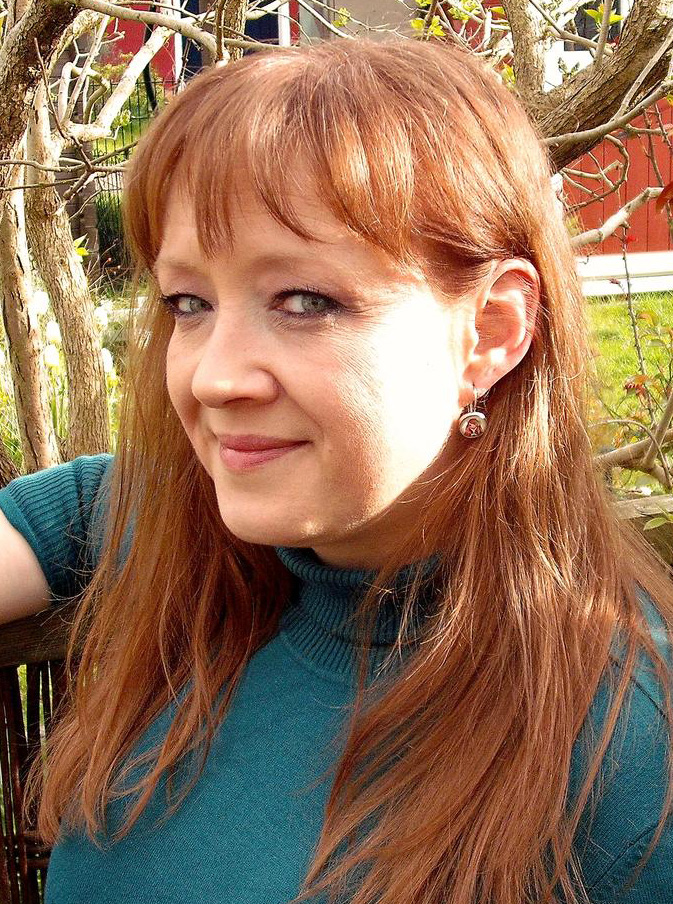 Leoni Eckart, aka Laegwen, started her baking career way before her own memory sets in, decorating Christmas cookies with her mother (at least that's what she's been told!), and has never entirely stopped puttering around in the kitchen since. Her first decorated cookies as an adult were her own wedding favors, and then, over Christmas 2014, her cookie fever went into overdrive! As of present, it shows no signs of cooling off. You can find Leoni on Facebook here, or you can reach her by email at laegwen@outlook.de.
Leoni Eckart, aka Laegwen, started her baking career way before her own memory sets in, decorating Christmas cookies with her mother (at least that's what she's been told!), and has never entirely stopped puttering around in the kitchen since. Her first decorated cookies as an adult were her own wedding favors, and then, over Christmas 2014, her cookie fever went into overdrive! As of present, it shows no signs of cooling off. You can find Leoni on Facebook here, or you can reach her by email at laegwen@outlook.de.
Photo credit: Leoni Eckart
Note: Get Inspired with Laegwen is a bimonthly series of cookie decorating tutorials that follow Leoni Eckart's personal experiments with gumpaste, royal icing, and other cookie decorating materials and methods. This article expresses the views of the author, and not necessarily those of this site, its owners, its administrators, or its employees. To read all of Leoni's past Get Inspired tutorials, click here. And to catch all of our Cookie Connection tutorials, click here.


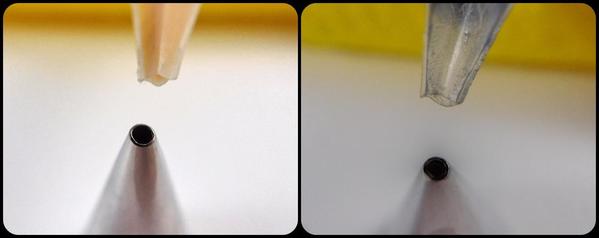



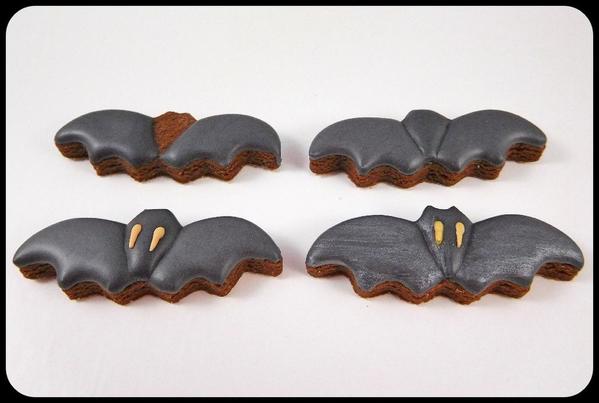
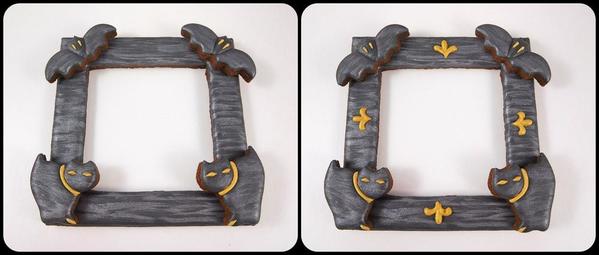
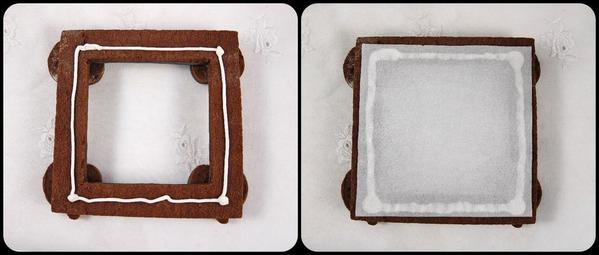
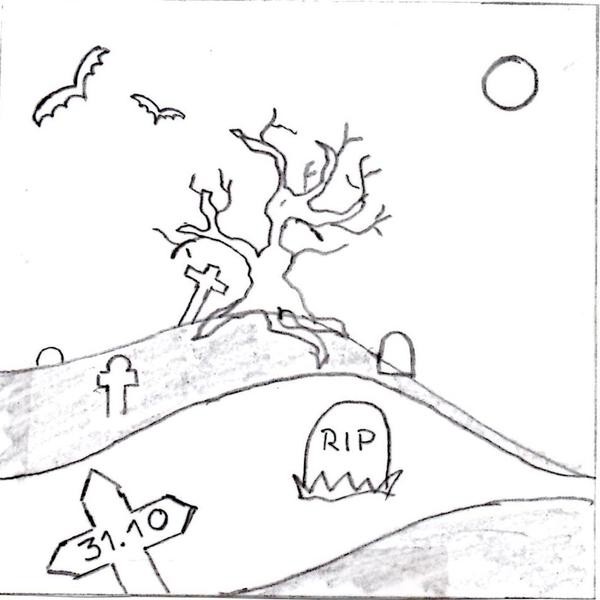
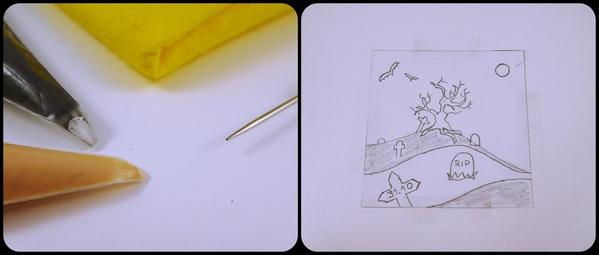

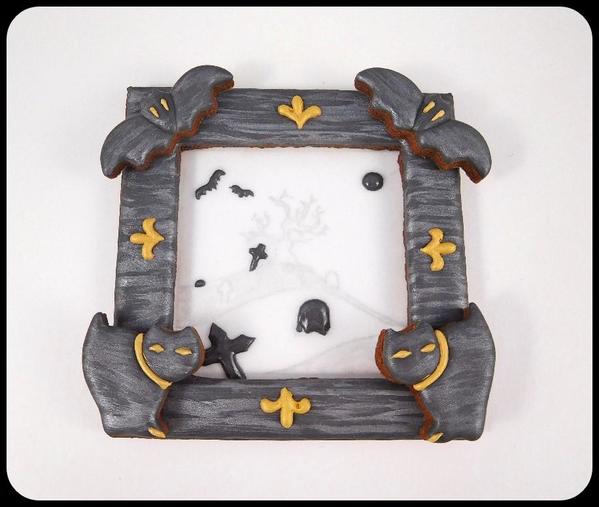

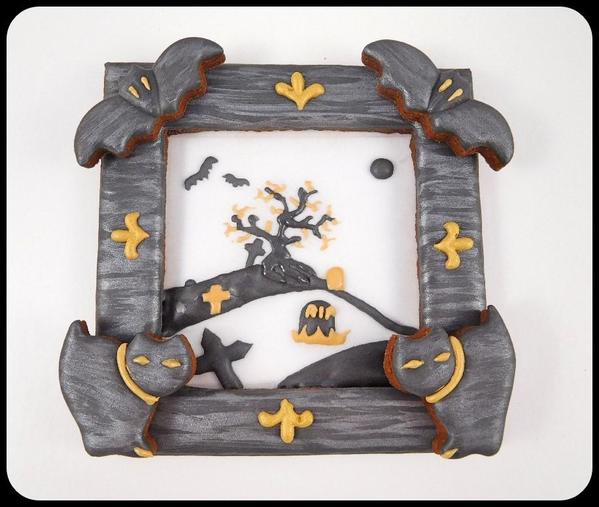
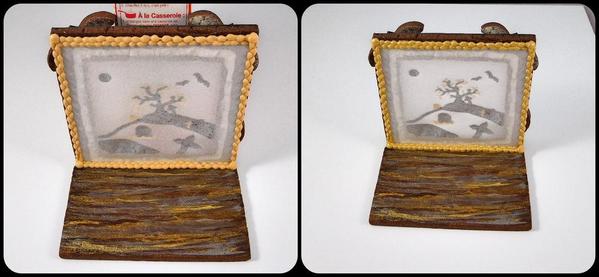

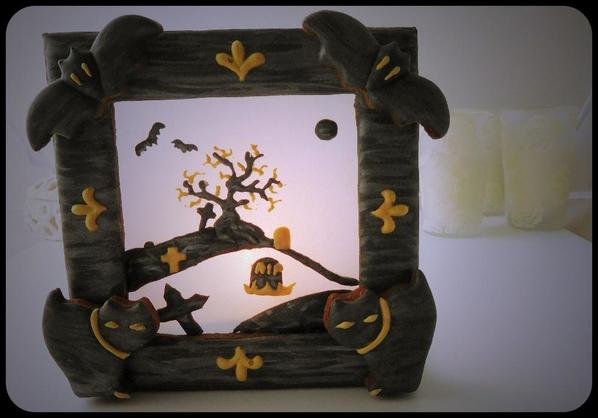


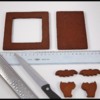
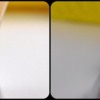





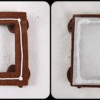
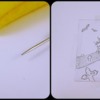
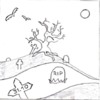
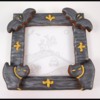
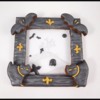

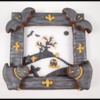


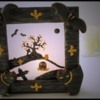
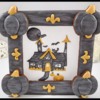

Comments (24)